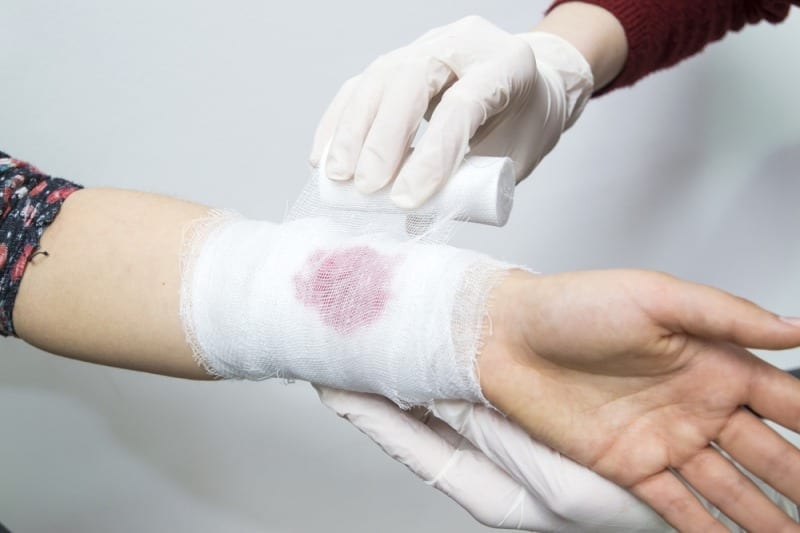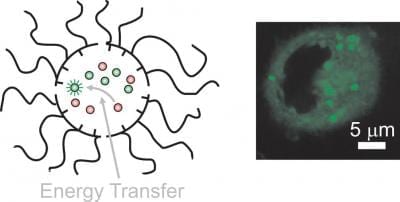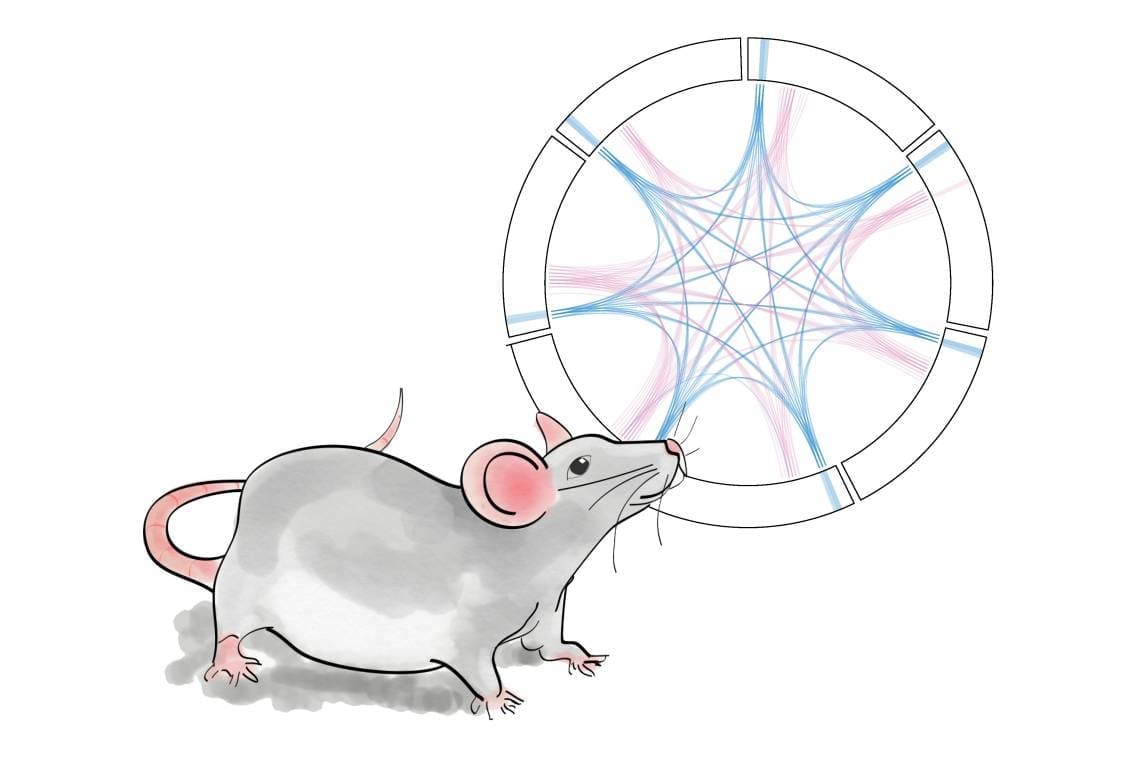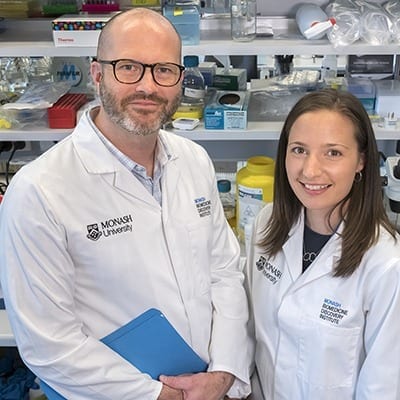
Scientists from ITMO University have developed magnetically-driven nanoparticles containing thrombin. A drug based on these nanoparticles can be injected intravenously and delivered straight to the site of a vascular injury to stop internal bleeding. It can accelerate local clot formation and reduce overall blood loss by up to 15 times. The nanoparticles are not toxic to humans and can potentially be used for safe treatment.
The results were published in Scientific Reports.
Internal bleeding is a serious medical emergency. It may be caused by numerous medical conditions such as traumas or chronic diseases and it occurs in various body parts including the brain or the stomach. Yet the prognosis for majority of cases is quite pessimistic, as internal bleeding usually causes hematomas, organ dysfunction and massive blood loss. Although there are several drugs that can stop severe blood loss, none of them can help entirely without surgical intervention. In an attempt to stop bleeding more effectively, scientists are developing drugs that can be applied using a simple injection. The main issue with such drugs is that the remedy has to initiate clot formation only at the site of vessel damage instead of affecting the entire vascular system.
In a new study, scientists from ITMO University suggested using magnet-driven nanoparticles to solve this problem. The particles consist of two key components. The first is thrombin, an enzyme responsible for blood clotting. It interacts with the protein called fibrinogen and triggers clot formation in order to block the damaged vessel. The thrombin is wrapped into a special porous matrix made of magnetite. This mineral is the second main ingredient and allows for precise control of the movement of particles inside the body using an external magnetic field.
Magnetic nanoparticles with thrombin have low activity and do not cause blood clotting if they are evenly distributed in blood vessels. Therefore it is possible to inject a solution of particles intravenously and localize them where needed using a magnet. When the patient receives an extra portion of fibrinogen, thrombin particles around the site of injury interact with it and the bleeding stops faster.
“We tested the nanoparticles’ efficiency on human blood plasma samples and a special vessel model,” says Andrey Drozdov, member of SCAMT Laboratory at ITMO University. “After the first experiments with plasma, we found out that thrombin in our nanoparticles is less active compared to its free variant. Yet we went on with the tests and ran additional experiments on a model of the blood stream. We were able to observe how nanoparticles behave when the vessel is damaged. It turned out that magnetic localization compensates for lower activity. Nanoparticles reduce the clotting time by 6.5 times and can reduce total blood loss by 15 times.”

“Synthesizing these nanoparticles is not easy,” says head of the laboratory Vladimir Vinogradov. “It is important to keep their size down to 200 nanometers; otherwise they will not be suitable for injection. In addition, mild synthesis conditions are required so that the thrombin molecule does not break down and lose its activity completely. Finally, we could only use biocompatible components. We checked the toxicity of our particles with human cells and made sure they are completely safe even during prolonged exposure.”
This work is part of a larger project aiming to create hybrid nanomaterial-based hemostatic drugs. Scientists are currently planning to test the drug based on the obtained material on animal models and, in case of success, run clinical trials. Researchers hope to create a nanoparticle-based hemostasis system that will be able to quickly and efficiently stop internal bleeding
Learn more: ITMO-Developed Nanoparticle Technology Helps Stop Internal Bleeding
The Latest on: Nanoparticle-based hemostasis system
[google_news title=”” keyword=”Nanoparticle-based hemostasis system” num_posts=”10″ blurb_length=”0″ show_thumb=”left”]
via Google News
The Latest on: Nanoparticle-based hemostasis system
- Nanoparticle researchers develop microfluidic platform for better delivery of gene therapy for lung diseaseon May 7, 2024 at 7:14 am
Drug delivery researchers at Oregon State University have developed a device with the potential to improve gene therapy for patients with inherited lung diseases such as cystic fibrosis.
- Nanoparticles and the Blood Coagulation Systemon May 5, 2024 at 5:00 pm
One such area of concern includes their effect on the immune system. While nanoparticle interactions with various constituents of the immune system have been reviewed before, little attention was ...
- Are Merit-Based Systems Actually Fair?on April 23, 2024 at 5:00 pm
Although conservatives tended to see merit-based systems as fairer than liberals, in general, they were still likely to change their position when hearing that Jim had advantages Tom didn’t have. This ...
- 26 Best Combat Systems In RPGs, Rankedon April 10, 2024 at 9:45 am
RPGs offer unique combat systems that combine strategy, timing, and skill appealing to all gamers. From turn-based classics like Dragon Quest to real-time favorites like Ys, RPGs continue to innovate.
- Nanoparticle Based Delivery of Gene Editing Enzymeson March 26, 2024 at 12:00 am
Cas9 based therapeutics have the potential to revolutionize the ... CRISPR-Gold is composed of gold nanoparticles assembled with the Cas9/gRNA ribonucleoprotein (RNP) complex, donor DNA, and an ...
- Nanoparticle Characterization Systemson June 24, 2023 at 2:20 am
Once submitted, we will try and place you in contact with a suitable Nanoparticle Characterization Systems supplier within 48 hours.
- 2nd Next-Generation Lipid-Based Nanoparticle Delivery Summiton March 30, 2023 at 8:46 am
This is your definitive industry-led meeting to discover new lipid-based nanoparticle formulations and engineer delivery systems for emerging payloads beyond RNA for extrahepatic delivery.
- Nanoparticle Characterization Systemson August 14, 2020 at 9:19 pm
Because these particles are too small to investigate using visible light, nanoparticle characterization systems use electrophoretic light scattering (ELS), dynamic light scattering (DLS), and static ...
- Nanoparticles Types, Properties and Useson April 3, 2019 at 9:28 am
Nanoparticles can contribute to stronger, lighter, cleaner and 'smarter' surfaces and systems. One striking example of what ... Scientists classify nanomaterials based on the number of dimensions of a ...
- NS300 Nanoparticle Characterization System from NanoSighton August 4, 2017 at 3:46 am
drug delivery systems, characterizes materials under the new EU Definition of Nanomaterials, and is particularly suited to analysis of particles labelled with fluorescent Quantum Dots. This latest ...
via Bing News










